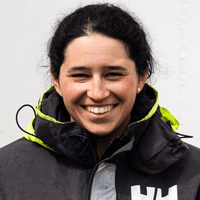There’s no single “right” number for everyone in Canada, but you can get a useful range with a few simple rules of thumb.
A common starting point:
Plan to replace about 70% of your pre-retirement income
Or build a nest egg of roughly 25x your expected yearly spending in retirement (often called the “4% rule”)
So if you think you’ll need $40,000 a year in retirement, you might aim for around $1,000,000 in invested assets (40,000 × 25).
If you can live comfortably on $30,000, that target drops to around $750,000.
These aren’t exact—just a way to start thinking about your number.
Stop paying for a $30 bank account that doesn't earn you anything
KOHO Can Help You Work Toward That Number
Government benefits and pensions help, but a lot of your retirement comfort comes from your own savings and habits.
KOHO Everything plan can support that by making your day-to-day money work harder:
Grow your savings with 3.5% interest, one of the highest rates in Canada
Earn a 2% cash back rate on groceries, eating, drinking, and transportation and 0.5% cash back on everything else
There are no foreign exchange fees, so you save on international purchases and travel
Unlimited transactions and free e-transfers
No minimum balance required, ever
A savings account that actually grows savings
What Changes Your Retirement Number?
Your target isn’t just about age—it’s about your lifestyle and safety nets:
Housing:
Own your home with a paid-off mortgage? You may need less.
Expect to rent in retirement? You may need more, since rent doesn’t disappear.
CPP, OAS, and pensions:
If you’ll get CPP and OAS, that’s some guaranteed monthly income.
If you also have a work pension, your personal savings target may be lower.
Lifestyle choices:
Frequent travel, hobbies, and helping kids/grandkids all raise your number.
A simpler lifestyle in a lower-cost area can lower it.
Health and longevity:
Planning to be cautious? Aim as if you’ll live well into your 90s so you don’t outlive your money.
A Simple Way to Get Your Own Rough Target
Estimate how much you’d like to spend per year in retirement (today’s dollars).
Subtract expected income from CPP/OAS/pensions.
Multiply the remaining yearly amount by 25 to get a ballpark savings goal.
Example:
Want to spend: $50,000/year
Expect CPP + OAS + pension: $20,000/year
Gap: $30,000/year → Target savings ≈ $750,000 (30,000 × 25)

About the author
Gaby Pilson is a writer, educator, travel guide, and lover of all things personal finance. She’s passionate about helping people feel empowered to take control of their financial lives by making investing, budgeting, and money-saving resources accessible to everyone.
Read more about this author